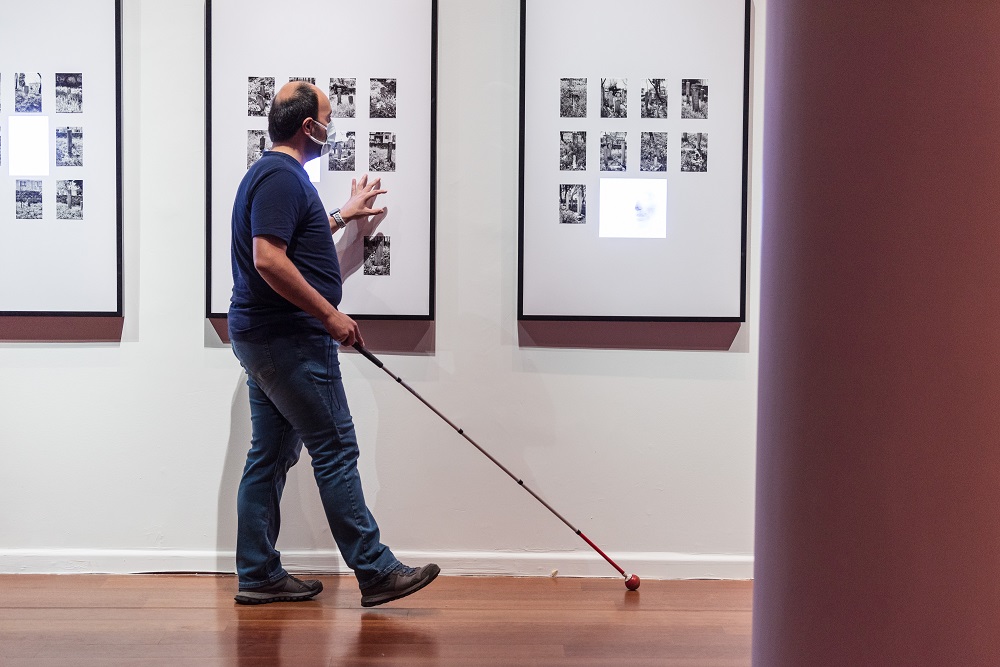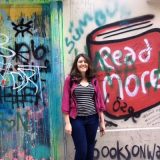‘There Is No Disability If There Is Accessibility’

Erişilebilir Her Şey (Accessible Everything) is a social enterprise that works for people with disabilities to lead an accessible life like everyone else. We talked to the team working with the motto ‘There is no disability if there is accessibility’, and we talked about the work they do to remove the obstacles.
Erişilebilir Her Şey collects the obstacles faced by people with disabilities under three main headings. These are communicative, contextual, and physical barriers. The team, which organizes trainings and produces projects under these headings, continues its journey with three founding partners, namely Seben Ayşe Dayı, Serim Berke Yarar and Hale Yıldız, and by adding seven experts in disability education and activism. The team emphasizes that it is correct to say, ‘person with disability’ instead of saying ‘disabled’ and says, ‘It is not the differences of the individual, but the inaccessibility of places or discriminatory attitudes towards these differences that prevent participation in society. In other words, if there is a “problem”, it is not in the individual, but in inaccessible environment. Therefore, making the definition as “person with disability” rather than “the disabled” makes accessibility needs more visible and opens up an area of advocacy for us.’
First of all, we would like to hear from you the story of the emergence of Erişilebilir Her Şey, what you do, and what solutions you offer to basic problems.
We have known each other for a long time as the three co-founders of Erişilebilir Her Şey. We are all people with disabilities who have been in the disability movement for over ten years. We realized from both our own life experiences and the problems experienced by the people around us that the biggest obstacle to the formation of an inclusive culture and equal participation in society is the lack of accessibility. At this point, it is necessary to expand the definition of accessibility a little. Accessibility includes accessing a product, service, resource easily and equally with everyone. For example, the inability of a place to be wheelchair accessible, the inability of a website to use assistive technologies easily, or a robust discourse in a public space can be considered as accessibility deficiencies in the context of disability. We, as Erişilebilir Her Şey, offer physical, digital, contextual, and communicative accessibility consultancy for exactly these problems. For example, we provide training on how to communicate more accurately with disability groups for the reformation of ‘Ableist Language’ and an equal communication. While writing reports on physical accessibility, we take both domestic and international standards and combine them with the user experience.
One of the services you provide is coaching training. What is the level of interest in training? Is it possible to say that the consciousness and awareness of people/institutions regarding disability access has increased? What stands out in your observations made with the questions asked, problems and demands conveyed in the trainings?
Our trainings constitute the communicative accessibility dimension of our consultancy processes. In our society, people with disabilities are generally viewed with pity or heroism. In order to change this perception, we organize perception and awareness trainings given directly by people with disabilities. We try to customize the examples given in the main content as much as possible by changing them according to the sector in which the institution works and the interest of the target audience. Of course, this adds to the effect. Since most people have come into contact with disability in one way or another, what we say does not remain abstract. When we explain the difference between the blind and the visually impaired through accessibility in the trainings, people can understand why it is necessary to use the expression blind, or when we explain how they can accompany a blind person while walking, it is concretely understood why the blind person should walk one step ahead and one step behind.
You are emphasizing the distinction between ‘the disabled’ and ‘people with disabilities’ on your website. Can you tell me one more time: Who are the disabled and people with disabilities, what are the differences between them?
When we look at the word ‘disabled’, and when the common definitions made since the 1980s are examined, it can be seen that this is a state of being disabled. Not the individual’s differences, but the inaccessibility of places or discriminatory attitudes towards these differences prevent participation in society. In other words, if there is a ‘problem’, it is not in the individual, but in inaccessible environment. Therefore, making the definition as ‘person with disability’ rather than ‘the disabled’ makes accessibility needs more visible and opens a field of advocacy for us.
66.9% of the social living spaces in our country are not accessible. Your team consists of disability educators, people with disabilities and disability activists. In which areas do you observe that people with disabilities living in Turkey have the most difficulty?
Actually, it is hard to put these in order, everything is interconnected. For example, we can talk about the physical accessibility problems caused by the infrastructure problems of schools in terms of access to quality education, as well as the inequalities created by the inability to use digital platforms through assistive technologies. At the same time, the fact that inclusive education practices are not well established is another issue. We are talking about a multiple and causal tangle in employment and participation in cultural life, and this is exactly why Erişilebilir ‘Her Şey’ (Accessible ‘Everything’) aims to take a more holistic approach rather than focusing on one specific point.
At the accessibility menu on your own site, you include shortcuts that make it easier for people with dyslexia, low vision, and similar disabilities to see and read. Considering that we live in the age of social media, the importance of contextual accessibility becomes even more evident. How common are these practices in Turkey?
We can often witness that large corporate structures use accessibility plugins on their websites. On the other hand, when it comes to social media, unfortunately very few institutions’ accounts are accessible. While almost every social media platform allows an accessible experience with a few settings from the settings menu, a limited number of institutions are taking action as there is little awareness on this subject. We aim to increase the visibility of these applications and settings within the scope of our inclusive communication trainings.
While you continue your work, do you have collaborations and exchanges with other non-governmental organizations or relevant official institutions? If we evaluate in this context, is it possible to talk about an effective organization in Turkey in the effort to establish an accessible life for people with disabilities?
We work in close contact with non-governmental organizations and carry out joint activities. Our consultants play an important role both in the design processes and in the dissemination of our work. In this respect, operating participatory processes teaches us a lot. On the other hand, the processes we carry out with public institutions can sometimes progress slowly and fail. Of course, bureaucratic slowness and deficiencies in the legal areas are the biggest reasons for this. Accessibility supervision in Turkey is still not standardized and the lack of a certification system slows things down. As a result, old structures are not inspected, and new structures are not built in accordance with the standards.
What works are on your agenda right now? Do you have any new projects for the future?
We made the Past Present İstanbul exhibition at the Sakıp Sabancı Museum accessible to individuals with visual and hearing impairments. The exhibition ended on November28. Many art institutions who experienced the exhibition and saw that culture and art accessibility were possible contacted us and our influence began to spread. I can already say that we will hear more accessible exhibition news in the coming days.

Bizi Takip Edin